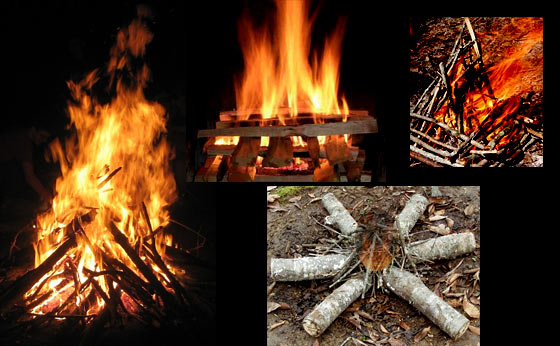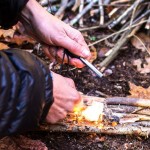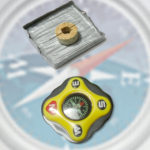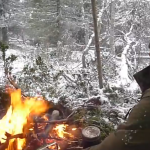Five Types of Fires That Everyone Needs to Know How to Build
There are a lot of different types of fires out there, and each one is designed for a specific purpose. Some can be used for cooking while others are meant to be a radiant source of heat. Others can be used to send smoke signals whereas you can also build fires that are designed to mask smoke and flame. However, it’s important to focus on the basics and master those before moving on to more complicated arrangements. Let’s take a look at five very basic fires and what they’re good for.
Tepee Fire
This is the most basic fire that most of us learn to build as kids. We take longer branches to form the frame or tepee and stuff it with kindling and tinder. We keep building and maintaining the fire with larger branches on the frame as needed, and this considered to be the all-purpose fire. They also tend to last longer and radiate more heat than other fires. They are ideal for hanging things such as kettles or using skewers to cook with. You can also line the perimeter with rocks in order to attract some radiant heat for warmth or drying wet items.
Parallel Fire
The parallel fire is perfect for creating a surface to hold pots and pans while cooking, and they can be more resistant to wind and rain than taller fires. To make a parallel fire, simply place two split logs that have similar characteristics next to each other with their flat sides facing up. Take an armful of kindling and tinder and place it between the two logs. Add another layer of kindling and place it atop and around the ends of the logs. Start the fire and allow it to settle as the kindling is consumed and the sides of the logs ignite. You can now place items on top for cooking. You can keep re-positioning the logs as they get consumed in order to maintain the fire. This is a good, slow-burning, simmering fire that can be a very efficient way to took or generate heat for a small area.
Star Fire
The star fire is another flat fire that produces a low flame signature. Take six to eight thick pieces of wood or logs and place them in a spoke-like fashion around an empty center. Fill the center with tinder and kindling, as well as in some of the narrow gaps near to where the logs or branches meet. Light and keep feeding the kindling until the “star” branches start burning. To keep the fire fed, simply push in the branches and repeat until the branches have either been consumed or replaced.
Pyramid Fire
The pyramid fire sort of resembles a log cabin, where you have intersecting pieces of logs and smaller branches forming increasingly-shorter layers. Start by placing two large pieces of wood parallel to each other on the ground about a foot or so apart (scale up or down as necessary). Then, add a series of smaller pieces so they rest atop, perpendicular to the base. Add another layer of larger pieces, and keep repeating the process until you have three or four layers.
Fill in the gaps with tinder, kindling and fire starting material and keep nursing the fire until the larger items start to ignite. Once they do, this fire will produce a lot coals and red-hot embers. This is nice, radiant fire that tends to burn slowly and retain a lot of residual heat. However, it can be tricky to start, so be careful that you choose your tinder and fire-starting material carefully in order to avoid wasting resources.
Reflector Fire
This type of fire is not usually on top of many lists of options out there, but it is very beneficial when you are trying to direct heat to radiate back over the fire. The first step is to take two sturdy pieces of wood and anchor them in the ground so they are standing up vertically. You can also lean them against some rocks or an embankment. Then, stack a series of branches or logs atop one another along the vertical supports you just made. This makes a wooden wall that can be placed behind a fire to direct heat back over the fire and in the opposite direction. The fire itself can be any style that you like as long as it is safe and appropriate for the situation at hand. The reflector fire is a great way to send heat into tents, a makeshift shelter, caves or outcroppings without putting the fire too close for comfort.
Try these basic fires out for yourself, and see how they can be useful under different conditions. This will give you a good foundation to work with as you develop your skills and learn how to build more situation-specific fires over the course of time. They are also excellent examples of simple fires that you can teach others to build in order to develop their skill set as well.














